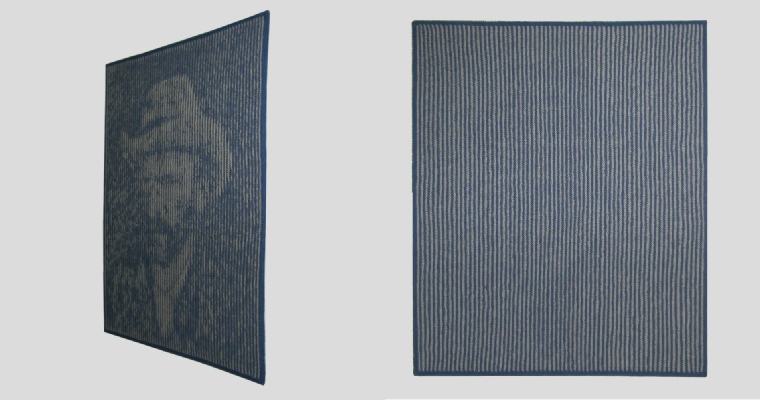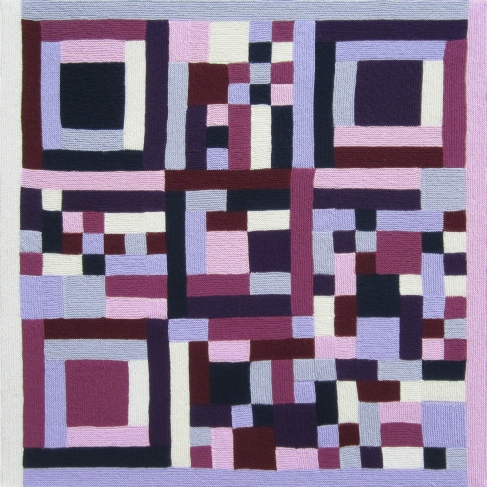I last wrote about ‘Woolly Thoughts” some years ago in a July 28, 2010 posting which focused on science knitting. Now, Alex Bellos has written an Oct. 3, 2016 posting for the Guardian about the ‘mathekniticians’ behind ‘Woolly Thoughts’,
In 1996 two British maths teachers active on an internet knitting forum were asked by a US yarn firm to design it an afghan.
“We were sent into a panic! We had no idea what an afghan was!” remembers Pat Ashforth, who with partner Steve Plummer is known in the crafts community for maths-inspired knits.
The couple soon discovered that an afghan was a knitted or crocheted blanket or throw. They produced four designs for the US firm, and it began a journey that has defined the rest of their lives.
Ashforth and Plummer decided that the afghan was the perfect canvas for expressing mathematical ideas – and since then they have devoted much of their time to producing as many as they can.
Together they have knitted and crocheted about 90 mathematical afghans (math-ghans?). Since each afghan takes about 100 hours to complete, this means the total time spent they have spent making them is about 9,000 hours (which adds up to 375 days – more than a year). And they have also made many other mathematical objects in wool.
…
The couple met while teaching at a school in Luton. By 1999 they were both working at a school in Nelson, Lancashire, where they married in 2005. Originally the afghans were hung in their classrooms. “They were invaluable as a vehicle for talking about maths, says Ashforth. “Large, touchable, unbreakable items were perfect for encouraging group discussion. It is much easier for everyone to be looking at the same thing than for each individual to have their own separate book.”
…
Not only are the images in the afghans mathematical, but the way they are made also involves mathematical thinking.
“We enjoy the challenge of seeing an idea then working out how it can be made into an afghan in a way that would be easy enough for anyone else to recreate. It is like trying to solve a puzzle and refining it to give the best possible solution.”
This is a great story from Bellos and it’s studded with images of the couple’s work.
Here are a few examples you won’t find embedded in Bellos’ posting,

Vincent: This illusion is based on Vincent Van Gogh’s Self-Portrait with Grey Felt Hat. The portrait was painted in 1887 and is in the Van Gogh Museum, Amsterdam. The colours in the illusion were chosen to reflect the impression of the painting but they are very subtle. If I was making it again I would choose slightly more contrasting colours for better definition of the face. Courtesy: Woolly Thoughts

QR Code: You have probably arrived at this page because you scanned the wall-hanging, or a photo of it, elsewhere.
I have been thinking about knitting a large-scale QR code for several years. I wanted it to look as little like a QR code as possible, which is rather perverse as the whole purpose of a code is that people can instantly recognise it and scan it with a phone. Some of my ideas were very complicated and I could not be sure that they would work. Eventually I decided to try a simple version first. There may be others later. QR codes differentiate between light and dark so the actual colours don’t really matter. My first attempt, which I pulled undone, had many more colours than the final version. I thought it looked very messy so eventually settled for four dark, and four light, colours, on the principle of the ‘four-colour map theorem’. There is no pattern for this design. Courtesy: Woolly Thoughts

Mixed Mitrefours: All of the shapes are kites and are all exactly the same size. Four-sided shapes that are all the same will always fit together. This design is unusual because the kites are constructed in two different ways. You may see some 3D effects in the design. It seems to look different from each direction. Courtesy: Woolly Thoughts
You can find Woolly Thoughts here and the community and yarn/pattern database for knitters and crocheters where you can purchase the Woolly Thoughts patterns for a small cost, Ravelry can be found here.